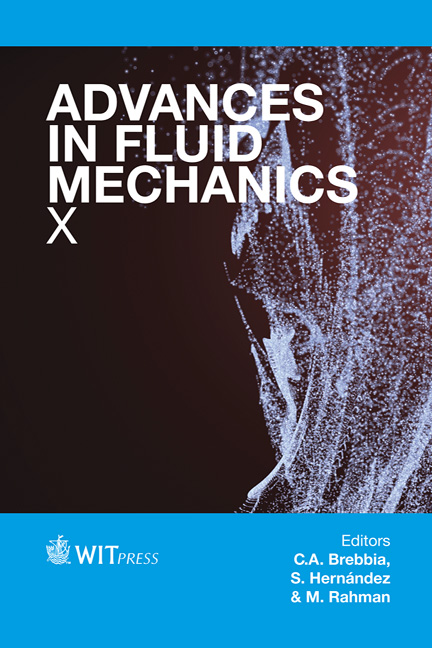Implementation Of A Nucleate Boiling Flux Partitioning Model For A CFD Simulation Of Compact Heat Exchangers Based On The Local Estimation Of Bulk Properties
Price
Free (open access)
Transaction
Volume
82
Pages
10
Page Range
27 - 36
Published
2014
Size
613 kb
Paper DOI
10.2495/AFM140031
Copyright
WIT Press
Author(s)
C. Paz, J. Porteiro, A. Copo & A. Díaz
Abstract
The widely used implementation of wall heat flux partitioning during subcooled flow nucleate boiling has a number of limitations when it is applied on a local cell basis as is done in CFD codes. The main limitations reported generally have their origin in the bulk formulation of the proposed submodels being transferred to a local balance at the cell near the wall whose volume and flow conditions strongly differ from those employed in the experimental calibration of the model imposed. Several models developed for nucleate boiling are based on a so-called wall heat flux partitioning strategy that consists of a modification of the convective heat transfer law at the wall to include evaporation. However, it is known that the local movement of the subcooled liquid to replace the volume of vapour represents an enormous contribution to heat flux enhancement, a process that is known as quenching. Therefore, when a 3D, local formulation of a wall heat flux partitioning boiling submodel is implemented at the cell scale in a CFD code, it must take into account that most of the available correlations and the physical phenomenon itself are strongly connected with regions of the fluid that are quite distant from the wall, normally around 0.5 mm. The numerical structure of CFD codes is not suitable for a non-local formulation. Therefore, this study attempts to address these limitations to implement a flux partitioning boiling model at the local cell scale but employs distant properties of the fluid for bulk conditions and heat exchange. This method has been validated in several geometries, allowing parallelisation and full grid size and shape versatility. The results obtained when applied to an EGR cooler indicate an important improvement with respect to other models, and the results obtained are more
Keywords
nucleate boiling, Chen’s model, CFD, local properties





